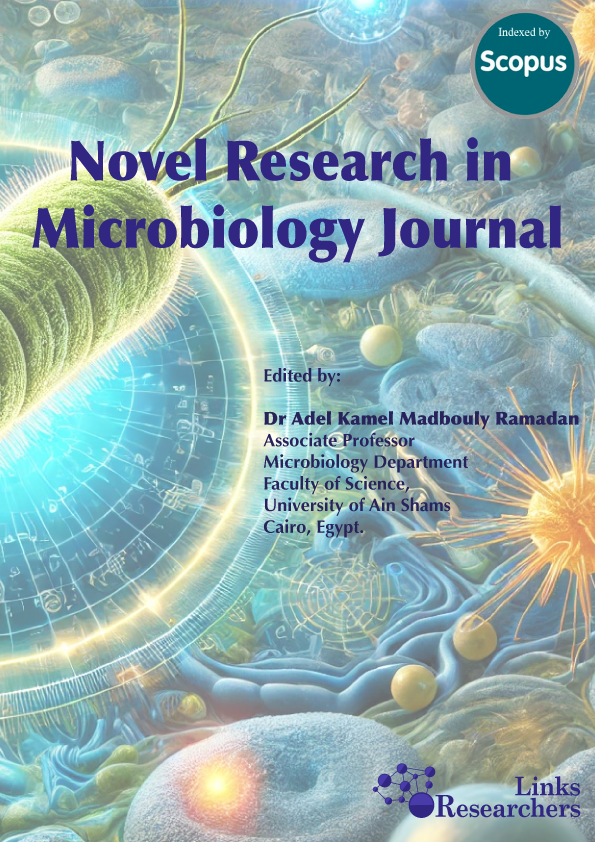Ambreen Akhtar Saddozai and Samina Khalil*
Hina Ali*, Iram Shaheen and Feroza Hamid Wattoo
Esraa Yosry Abdel Halim1, Hamdy El-Essawy1, Abeer Abdel Nasser Awad1, Mona S. El-Kutry2, Lamiaa Ibrahim Ahmed1*
Adriana Cervantes-Noriega1, Norma A. López2, Alfredo Estrada-Angulo2, Beatriz I. Castro-Pérez2, Elizama Ponce-Barraza2, Gilberto López-Valencia1, Alberto Barreras1, Alejandro Plascencia3*
Rasha Ali Taha Hamza1, Atef Saad Osheba1, Hassan Mohamed Sobhy2, Sahar Hussein Abdalla Hekal2*
Md. Enayet Kabir1, Md. Jahangir Alam1*, Md. Mosharaf Hossain2, Zannatul Ferdaushi3
Keywords: Total mixed ration, Blood profile...
Weam Mohamed Baher*, Gamilat A. El said
Zohair S. Mulla1*, Mostafa M. Abdelhafeez2
Mohamed Saleh*, S.E. Laban, G.Z. Mostafa, S.T. Moubarak
Istna Mangisah1*, Heni Rizqiati2, Nyoman Suthama1
Keywords | Broiler growth, Digestive tract, Feed ...
Sri Setyaningrum*, Dini Julia Sari Siregar, Tengku Gilang Pradana
Keywords | Gembili tuber, Broiler, Probiotic, Performance, Gut intestinal
...Ahmed Ali Chandio1, Asghar Ali Kamboh1*, Nazar Ali Korejo2, Riaz Ahmed Leghari3 and Muhammad Ali Chandio4
Ahmad Jupri1*, Yuliana Vofi2, Faturrahman2, Immy Suci Rohyani1, Ernawati1, Bulkaini3, Djoko Kisworo3, Wardatul Jannah4
Suleman Irfan1*, Masood Rabbani1, Ali Ahmad Sheikh1, Sehrish Firyal2 and Arfat Yousaf Shaheen1
Blessing Ndenum Peter1, Olufemi Bolarinwa Adedeji1, Reuben Chukwuka Okocha2,3*, Ekemini Moses Okon4
Nafissa Sahel1*, Fadela Chougrani2, Abderrahim Cheriguene3 and Zineb Hamani1
Franciscus Rudi Prasetyo Hantoro1,2,*, Dwi Sunarti1, Turrini Yudiarti1, Sri Sumarsih1, Rini Nurhayati2
Turrini Yudiarti*, Sugiharto Sugiharto, Endang Widiastuti, Hanny Indrat Wahyuni, Tri Agus Sartono, Maulana Hamonangan Nasution
Istna Mangisah*, Lilik Krismiyanto, Vitus Dwi Yunianto Budi Ismadi, Mulyono Mulyono, Nyoman Suthama, Fajar Wahyono
Endy Triyannanto1, Danung Nur Adli2, Diah Pratiwi3, Lukman Hakim3, Selma Noor Permadi3, Taufik Kurniawan3, Angga Maulana Firmansyah3, Lina Ivanti3, Dinar Suksmayu Saputri3, Mohammad Miftakhus Sholikin4, Hari Hariadi5, Tri Ujilestari3, Teguh Wahyono3*
Desak Putu Mas Ari Candrawati*, I Gede Mahardika, I Gusti Nyoman Gde Bidura, Ni Wayan Siti
Safaa El Bialy1*, Nabil Bker2, Hossam Ibrahim3, Saber, A. Saad4, Eman Ali5
Dalia Hamid Mansour1, Mohamed Elshabrawy Ghanem2, Marwa Hassan3, Yousry Ibrahim4, Ibrahim M. Hegab5*
Dheyaa Ali Aljuhaishi*, Firas Hussain Kadim Albawi
Bashir I. 1 Adam A.S. 2 Yahaya H.S. 3 Makeri D. 4 Ntulume I. 2 Aliero A.A. 5 Afolabi R.O. 6
Basma T. Abd-Elhalim*
Ghadir A. El-Chaghaby; Heba A. Shehta; Sayed Rashad; El-Shaimaa A. Rawash; Heba R. Eid









